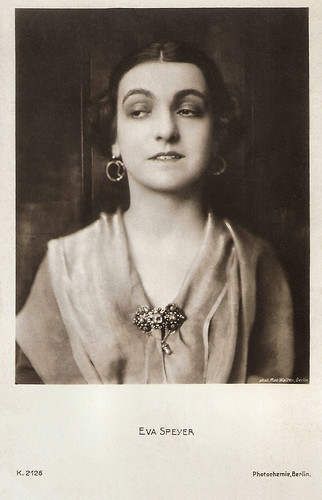
German postcard by Photochemie, Berlin no. K.2126. Photo: Mac Walten, Berlin.
Eva Speyer (1883-1932 (?)), also known as Eva Stöckl Speyer, was a German actress, who appeared in more than seventy films from 1911 to 1932.
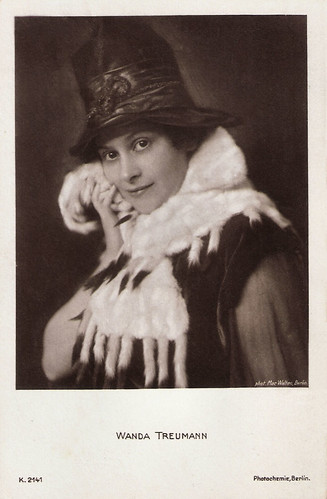
German postcard by Photochemie, Berlin, no. K.2141. Photo: Mac Walten, Berlin.
Wanda Treumann (1883–1963) belonged to the most popular stars of German cinema before the first World War. Together with Viggo Larsen she also produced more than 80 films in the 1910s, in which she often played the female lead. As an actress, she played in nearly 90 films, but many of them were shorts.

German postcard by Photochemie, Berlin, no. K.2188. Photo: Mac Walten, Berlin.
Ossi Oswalda (1895-1947) was one of the most popular comediennes of German silent cinema.
<
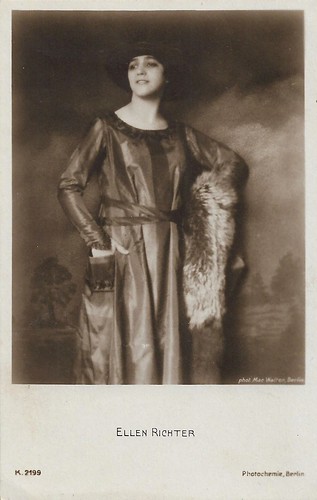
German postcard by Photochemie, Berlin, no. K.2199. Photo: Mac Walten, Berlin.
Austrian actress and producer Ellen Richter (1893-1963) caused a sensation as a leading lady in German silent dramas and action films from the middle of the 1910s. Especially in the 1920s, she presented herself as 'The Modern Woman'.
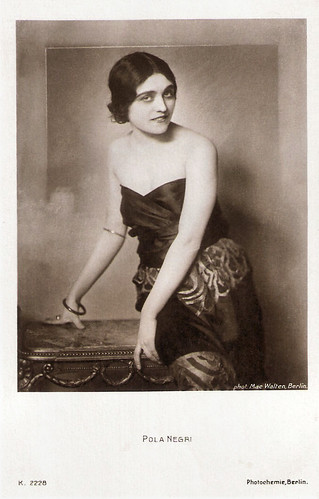
German postcard by Photochemie, Berlin, no. K.2228. Photo: Mac Walten, Berlin.
Polish film actress Pola Negri (1897-1987) achieved fame and notoriety as a femme fatale in German and American silent films between the 1910s and 1930s. Negri was an overnight sensation in Ernst Lubitsch' Madame du Barry/Passion (1919). She moved to Hollywood where she lived in a palace, modelled after the White House.

German postcard by Photochemie, Berlin, no. K.2230. Photo: Mac Walten, Berlin.
Magnus Stifter (1878-1943) was an Austrian actor and film director, who acted in well over 100 German - mostly silent - films.
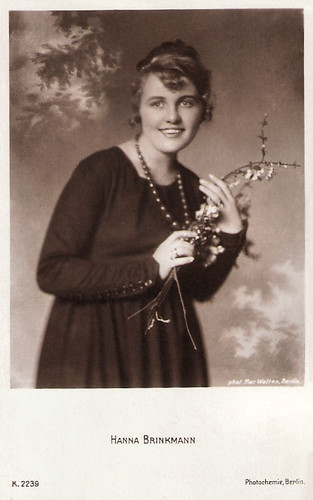
German postcard by Photochemie, Berlin, no. K.2239. Photo: Mac Walten, Berlin.
German actress Hanne Brinkmann (1895-1984) appeared in 24 silent films between 1914 and 1929. During the First World War, she was a popular comedian who had her own film series.

German postcard by Photochemie, Berlin, no. K. 2259. Photo: Mac Walten, Berlin.
Rosa Porten (1884-1972) was a German screenwriter, film director and actress of the silent era. She was Henny Porten's sister.

German postcard by Photochemie, Berlin, no. K.2503. Photo: Phot. Atelier Walten, Berlin.
Käthe Haack (1897-1986) was an extremely versatile German actress. Between 1915 and 1980 she appeared in some 230 films and television productions.
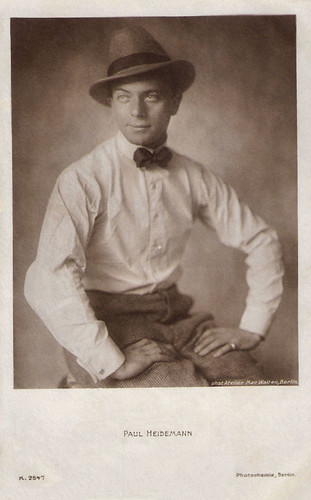
German postcard by Photochemie, Berlin, no. K.2547. Photo: Atelier Mac Walten, Berlin.
Paul Heidemann (1884-1968) was a German stage and screen actor, film director and film producer. He was famous for his comical parts.

German postcard by Photochemie, Berlin, no. K.2708. Photo: Atelier Mac Walten, Berlin.
If Weimar cinema had one film star, then it was Emil Jannings (1884-1950) for sure. He was a great actor in the silent era and won the first Oscar for Best Actor. Priceless are his performances as Louis XV in Lubitsch's Madame Dubarry (1919), as the doorman in Murnau's The Last Laugh (1924), the jealous acrobat in Dupont's Variety (1925) and the professor in Von Sternberg's The Blue Angel (1930).
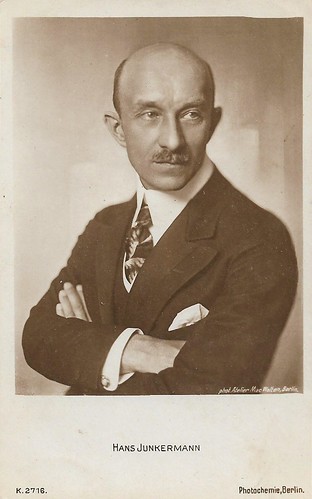
German postcard by Photochemie, Berlin, no. K.2716. Photo: Atelier Mac Walten, Berlin.
Hans Junkermann (1872-1943) was a prolific German character comedian, noted for his gauche manner and walrus moustache. In films from 1911, including a brief 1930 sojourn in Hollywood, acting in German-language versions of American films under the direction of Jacques Feyder. Subsequently, he was seen in many German A-grade productions until his death in 1943. He was married to the Austrian actress Julia Serda.
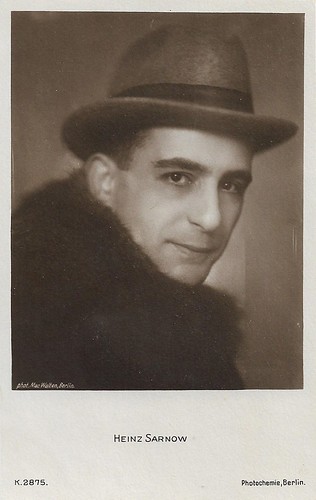
German postcard by Photochemie, Berlin, no. K.2875. Photo: Mac Walten, Berlin.
Heinz Sarnow (1882-1943) was an Austrian stage and screen actor and director, known for films such as Der zeugende Tod (1921), Nie sollst Du mich befragen (1919) and Eine Frauenschönheit unter dem Seziermesser (1920). Sarnow played in 31 films between 1913 and 1932.
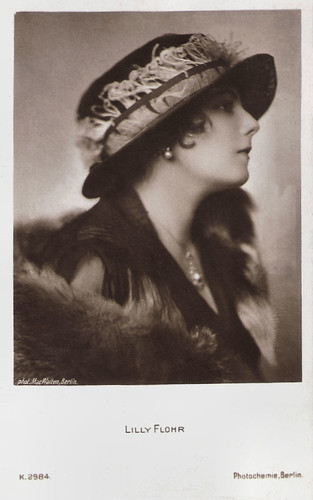
German postcard by Photochemie, Berlin, no. K.2984. Photo: Mac Walten, Berlin.
Austrian film star Lilly Flohr (1893-1978) was a busy actress, soubrette, cabaret artist and chanson singer on stage. From 1918 on she starred in 25 silent films.

German postcard by Photochemie, Berlin, no. K.3001. Photo: Mac Walten, Berlin.
Ernst Rückert (1886-1950) was a German stage and screen actor. In the 1910s he was a popular film actor, while in the mid-1920s he starred in so-called Prussian films.

German postcard by Photochemie, Berlin, no. K.3055. Photo: Mac Walten, Berlin.
Harry Liedtke (1882-1945) was the charming ladykiller of many early silent classics. Detective serials like Joe Deebs made him one of the first male stars of German cinema.
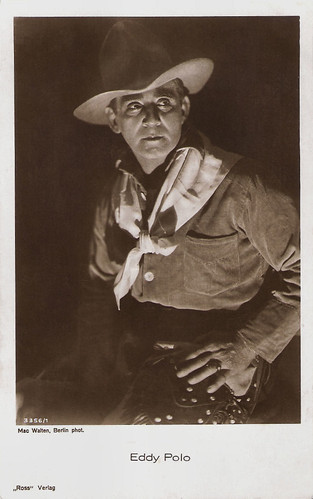
German postcard by Ross Verlag, no. 3356/1, 1928-1929. Photo: Mac Walten, Berlin.
Eddie Polo (1875–1961) was an Austro-American actor of the silent era. He was born Edward W. Wyman or Weimer in Vienna, Austria-Hungary. With his brother Sam, he was the trapeze act The Flying Cordovas. He was the first man to parachute off the Eiffel Tower. Beginning in 1913, he appeared in serials and films in the USA and as Cyclone Smith, he became a popular Western hero. During the late 1920s, he was an action star in the German silent cinema. After his acting career ended in the mid-1940s he worked as a makeup artist.
Source: National Portrait Gallery.
1 comment:
hi there I have a signed photo by mac walten of Melle Fillis but cannot find any history about her?
Post a Comment